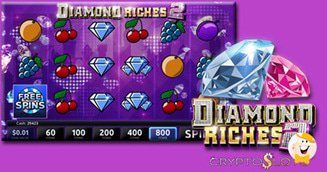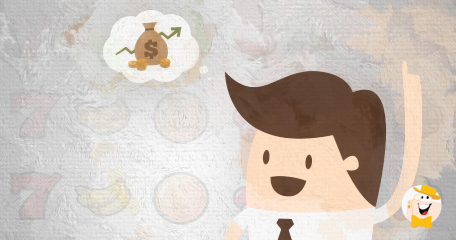
The biggest problem with penny slot machines in brick-and-mortar casinos is that they have extremely poor returns unless you can identify opportunities to play them at an advantage. Another problem is that the one cent symbol that appears on these machines is not so much true as it is an enticement by way of false advertising.
There are countless examples, one of the most egregious of which I have noticed are the newish Quick Hits Pro machines with a minimum bet of $1.00, and yet that penny symbol has prominent front-and-center placement. The player may bet either $1.00, $2.00 or $3.00, and the game consists of three actual different reel sets that are played in conjunction with one another only minimally. Essentially, there is a bonus symbol that randomly lights up, and if it lights up by all three reel sets, then the player goes to the bonus. Occasionally, the bells and whistles will go off and that signals either a decent hit (relative to bet) or that the player is going to, ‘Automatically,’ go to the bonus.
The point of the matter is that the machine is a penny machine in name only. Buffalo Gold is just another of many examples of such a machine because the minimum bet is sixty cents on several units, and yet there is that one cent marking on the display. In fact, most slot machines, and certainly all new penny machines, advertise themselves by that denomination, but cannot be played without a bet that is greater than Abe Lincoln would suggest.
The only machines that I would consider to be, ‘True,’ penny machines are those upon which a player has the option of playing a single line at one penny per line. In my opinion, that would be an awful way to play, insanely boring, but that is the criteria that I would suggest should be required for a machine to constitute a penny machine.
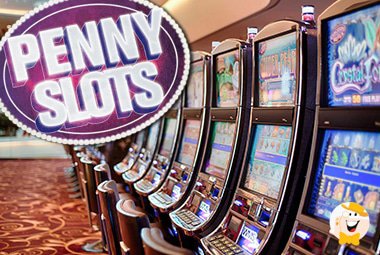
If you have a penny keno machine (rare, but they exist) then that machine does, in fact, allow a player to bet as little as one cent per card. If you have a penny VP machine, while you’re getting shorted on the Royal by not betting at least five cents per hand, the option exists only to bet one penny on each hand.
That is the criteria, in my view, that makes the denomination true. It may not be the optimal way to play the game, but if you are going to apply the 1/100th of a dollar denomination tag to it, then it should theoretically be able to be played for that amount. I’m not sure how the slots get away with it because, if you tried it on Video Poker and required a minimum bet of 125 units per hand, Gaming would come in and say, “No, that’s a quarter machine!”
The truth of the matter is that the notion of penny machines is completely deceptive. Machines that require a minimum bet of a dollar should be called dollar machines whereas machines that require a minimum bet of thirty cents should be called...um...thirty cent machines, I suppose.
The argument that the $0.30 unit should be called a penny machine is at least somewhat firm, on those machines, they simply dictate a minimum amount per line that the player must play. The player must play thirty lines at a tenth of a dime each. That’s reasonable enough, even though I still don’t quite like it. With machines such as that Quick Hits Pro, and others, players aren’t really sure what they are playing per line as it is not immediately apparent, the button just says something like, “Bet 60 Credits.”
Many machines have scatter pays across the reels, which means that only the first three (or however many) reels have to match, but the symbols do not have to fall on any specific lines to pay. How should one look at those? These machines, likewise, also term themselves pennies but require a minimum bet of multiple units.
The so-called, ‘Penny machines,’ now require a minimum bet greater than those on machines of higher denominations. There are still newer multi-line quarter games coming out upon which a player may bet one line at one quarter per line if the player so chooses. It is also thought that the quarter games have a better overall return than the penny games, bolstered by the fact that the player can bet less leading to a combination that results in the player playing longer.
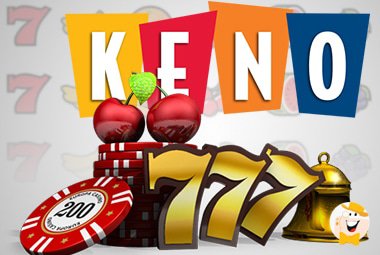
The biggest problem I have with these multi-line or multi-? penny machines are the fact that they enable the concept of partial pays to take place. Partial pays are simply, ‘Wins,’ that are described as such on the machine that results in the player receiving less than the total amount bet. The way that slots and other electronic games work are that pays are described as being on a, ‘For one,’ basis which means any bet is presumed lost at the time you make it. It is for that reason a player can bet $1.00 on a penny machine, get 30% of it back, and the machine will say, “Win 30.” The machine should really say, “Lose 70.”
The psychological reasoning behind such a device is that the frequent wins are expected to keep players engaged in the device and enjoying the game. They tend to satisfy a player’s desire for winning frequently as the player sees that money is steadily returned to him or her.
One thing that such players don’t realize is that I can play that game with them too if they really want. In fact, I’ll let them win 100% of the time. They will give me $1.00, and I will let them win $0.90 every single play! I would do that out of the goodness of my heart, of course.
There are often some small changes from machine to machine that potentially make machines worse if the player does not notice them. For instance, while playing a must-hit machine, I noticed another player and myself were betting the same amount, but a particular line result would pay me back $0.10 whereas it was giving the other player $0.05. When playing a positive must-hit, as I’ve said before, I have to make some assumptions about the return of the base game as I have not analyzed it thoroughly. But generally, my assumptions usually invoke average slot returns for that denomination in the jurisdiction and then I knock a couple of percentage points off of that.
It is a very limited sample, but imagine that this five cent difference in pays presented itself once in every twenty plays, which was my finding. Again, this was over only three-hundred plays, so a very limited sample size. However, I compared the paytables of the two machines on the Rules screen and that appeared to be the only difference, the progressive meters also moved at the same speed.
Okay, so if you have a machine that pays, we’ll assume 90% long-term (easy number to work with) and 1/20 results will return $.10 on $1.00 bet, then that result represents $0.10 for every 20 spins bet which becomes $2.00 for every 400 spins. In other words, that line result contributes one-half of one percent to the return...we’re going to assume that you can’t hit that specific result on multiple lines at once for simplicity of example, even though you can. If you cut that result in half, then you cut the return from that result in half and 90% becomes 89.75% which may not be meaningful over the course of a short session, but over $10,000 in bets is another $25 for the casino.
I will stipulate that the reel assignment could be different from one machine to the next and that I could have actually been playing a worse returning machine less likely to hit bonus games because it has one fewer bonus symbol, but my point is that there is no way to know.
The nice aspect of most video poker and video keno games, as well as the majority of table games, is that the house edge can be pretty easily determined. There are a few jurisdictions that require that the house edge of a game be made known, but that is typically not the case with slots. One would think that it would be enough that the casinos could keep that information secret, but now it has become difficult for a player to even really understand what he/she is betting on when making one of these fixed amount bets.
While we’re on the subject, let’s talk about those reel assignments for a second. For those of you with any familiarity with cards, not counting jokers, there are fifty-two cards in a playing card deck. We know what the probabilities are for hitting a certain result, for instance, that the first card drawn will be an Ace of Spades is 1/52. We don’t have that luxury when it comes to slot machines, but it could make a big difference.
I could whip together some math for an entire slot machine really quick, but I’ll spare you guys having to go through all of that. Instead, we’re going to look at just two things: Bonus Games and Cherries. Let’s say that I have sixty reel stops on my machine and I have the following bonus symbols per reel:
10, 10, 5
In other words, the probability of hitting Bonus Games is:
(10/60)*(10/60)*(5/60) = 0.00231481481
I could just as easily make it 5, 10, 10, but that wouldn’t make sense because I want the player to have tons of, ‘Near Misses,” (almost 1% of the time) to encourage the player to play more. The odds of hitting the bonus games on my machine are about 1 in 432 as it stands.
Imagine you have to bet a dollar to play my game, and that the average result of the bonus games is $40. That would mean that you bet $432 to get $40 on Bonus Games (and more money from other wins, of course) which means bonus games account for 9.259% of the return of the game.
On this machine, we are also going to have Cherries. We are going to say that three Cherries is going to pay five bucks and the reel distribution for Cherries is:
(20/60)*(20/60)*(20/60) = 0.03703703703
It means that result will happen about 1 in 27 spins. Again, if it pays $5, then on $432 in total bets at $1/pull:
(432/27 * 5) = $80
It means that result will contribute $80, or roughly 18.52% of all monies bet. That’s interestingly almost exactly twice as much as the free games, and I swear I didn’t do that intentionally!
However, let’s make a very minor change to the game. We are going to take one bonus game symbol from each reel and turn it into a Cherry instead, let’s see what happens:
(9/60)*(9/60)*(4/60) = 0.0015
The result is that we have reduced the probability of hitting the free games to .0015 which represents odds of about 1 in 666.67. What happens now is that a player betting $432 in total bets with free games that pay an average of $40 gets this:

(1/666.67 * 432) * 40 = 25.9198704006
It represents essentially $25.92 in $432 bet which is a return of 6% exactly on that result.
In the meantime, there are more cherries, so that’s good, right?
(21/60)^3 = 0.042875
Sweet, so we are now going to see three cherries for five bucks on an improved 1 in 23.32 spins!
The return improves on cherries for $432 bet:
(1/23.32 * 432) * 5 = 92.62
And we see that the 92.62/432 represents 21.44% of the return, rounded.
The total return we see from those two results combined is 27.44% the new way, whereas it was roughly 27.779% before we changed the symbols up. Of course, I also made Cherries meaningfully more likely, as compared to changing all three of the symbols each to something different. Also, while the difference of 0.379% doesn’t seem significant, again, over $10,000 in total bets, that’s another $37.90 to the casino.
It matters to them because they see ten grand in bets on that unit every day, at least if it is performing pretty well. The worst part is, players don’t notice it.
The point of the matter is that slots are one of the only games that can easily get away with something like this. A casino couldn’t change the payout on Two Pair on Jacks or Better from 2-For-1 to even money without that being noticed by the players because that is an extremely non-standard payout for that on JoB. The game could theoretically make up for it in other areas, such as paying more than 9-For-1 on Full Houses, but again, that is something that can be identified and calculated. The same thing is true for Video Keno. The probabilities of certain results, given a calculable Optimal Strategy, are known.
While it would be unreasonable to expect casinos to disclose the probabilities of all the line results for their slot machines, because that would be akin to releasing their PAR sheets, players should demand to know the return percentage of a slot game. The only reason that doesn’t happen is because it would be a very clear cut and obvious number that should drive players to the better returning games, and as a result, slot manufacturers would have to eventually move their returns upward due to competition.
While that wouldn’t be good for the casinos or manufacturers, it would be a terrific development for the slot players. The players would at least be able to differentiate between one game and another, in terms of the expected returns, and make a conscious decision to buck a particular house edge. Would you play a game at 88.12% if there was a game advertising 92.56% for the same bet amount sitting right next to it? Maybe, but it would just be because you thought the first game looked more fun.
Either way, I think that slot players deserve to at least have an idea of the edge that they are up against on a machine, and that it would lead them to perhaps playing other games, such as Video Poker or Table Games. Again, that’s not necessarily good for the casinos, or the Video Poker players as many more people playing would cause the paytables to get worse, but it makes sense for slot players who wish to act in their own best interest.
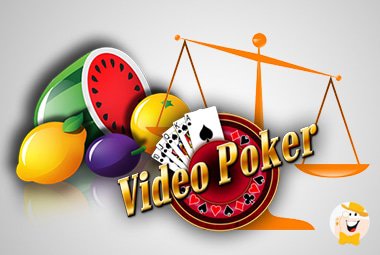
These are just a bunch of small changes that make a huge difference in the long run. A player might not think that a $32 per $10,000 difference means anything to the casinos, but let’s figure that $10,000 in coin-in gets run through on the slot machine every two days, which would mean that the machine would do an extra $5,840/year. That’s looking a bit more substantial, now isn’t it.
Now imagine that is the case for all 1,128 machines on the floor, the casino just made an additional $6,587,520 per year by switching a couple of symbols around in a way that the player is unlikely to notice. The casino can also accomplish the same task by changing the payout for a particular result a little bit, and the players will often be none the wiser.
Unfortunately, the casinos are going to try to get away with whatever they think they can get away with when it comes to fleecing the slot players, and the only thing they need to be able to deliver is slot games that they think the players will enjoy. There are games out there, usually with high-definition graphics, impressive sound systems and sometimes extremely comfortable chairs that are paying as low as 85%, with much of that 85% being in the form of, ‘Wins,’ that fail even to equal the player's total amount bet. That has absolutely no chance of changing unless players come together to demand to know what the hold of the game they are playing is.
The casinos cannot get away with such shenanigans on Video Poker, although there are people who will still play astoundingly bad games very badly. However, if the casino wants to attract players who are at least a little bit savvy, then they are going to need to offer paytables on VP that do not absolutely slaughter the player. The worst casino I have seen had machines such that every machine paid less than 95%, played optimally, and almost nobody there was playing Video Poker. The fact of the matter is that (considering mistakes) they quickly determined that they might have it as well or better on some of the slots.
Conclusion:
Small changes can make a big difference in the return of a game, and that applies in particular to slot machines. Unfortunately, players have no way of knowing when these changes are made and how one machine might compare to another in terms of overall return. Lacking this information, players are often going to play whatever machine looks the most fun, often at a greater house edge than the machines right next to it.
Another, ‘Small Change,’ (now do you get it?) is that a penny machine is no longer truly a penny machine as the player cannot configure the amount of credits per line to be bet, or alternatively, the number of lines being played. On many of these machines, the only choice that a player has is to bet from between four and six total fixed amounts.
The slot machine manufacturers are never going to disclose the pays and probabilities of their slot games fully, but as it stands now, the player does not even have access to the most minimal information in brick-and-mortar casinos. The only way that this will ever change is if the players decide to boycott slot machines in B&M’s until such time that they make available the percentage payouts on the machines.
This is one area where online players have it better, as most internet slot games pay in the neighborhood of 96%, according to the Wizard of Odds.






